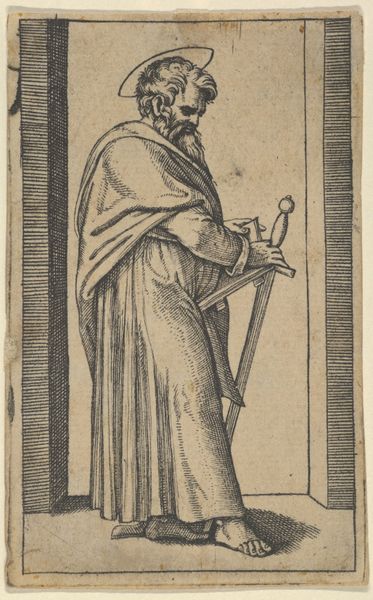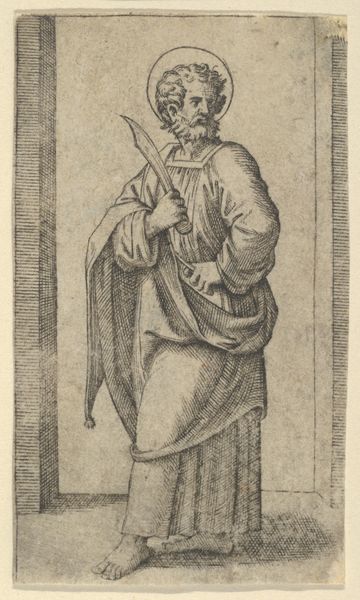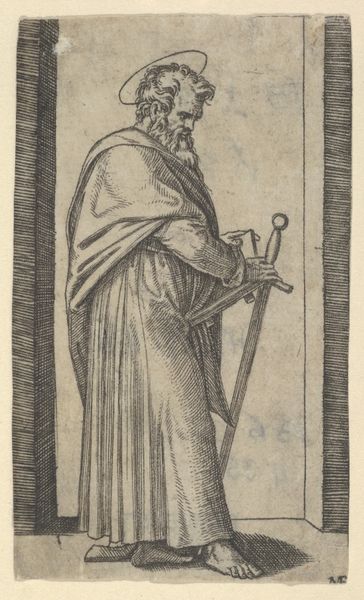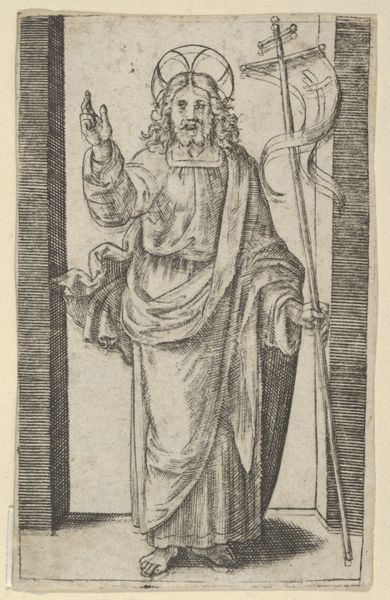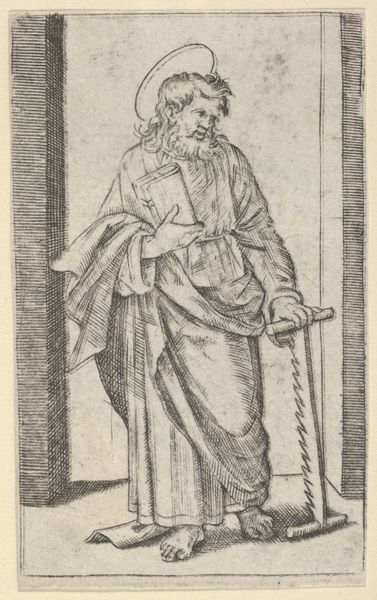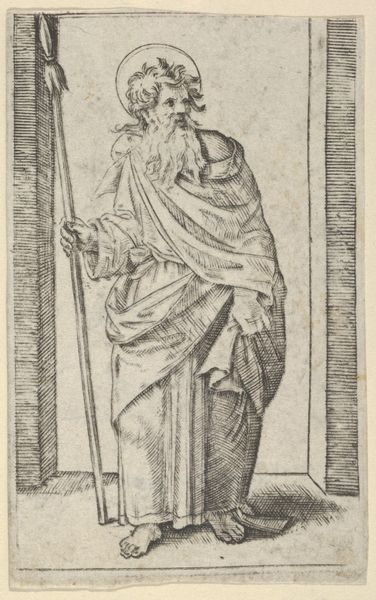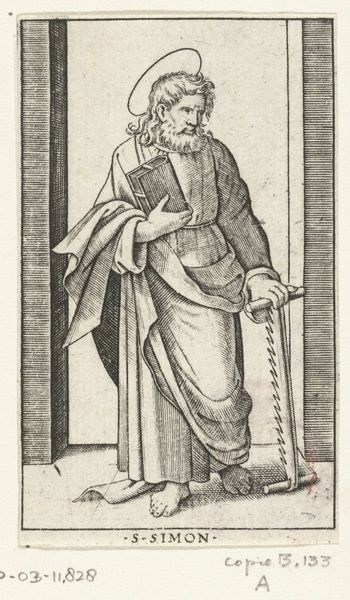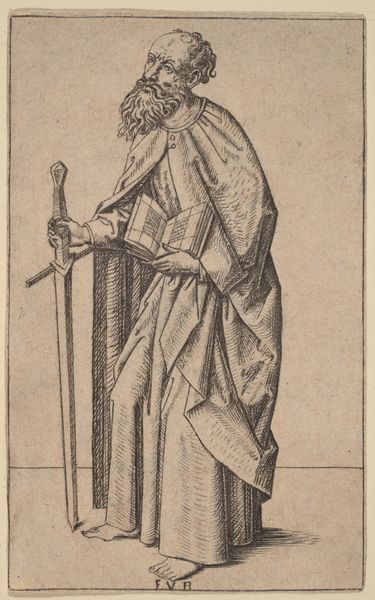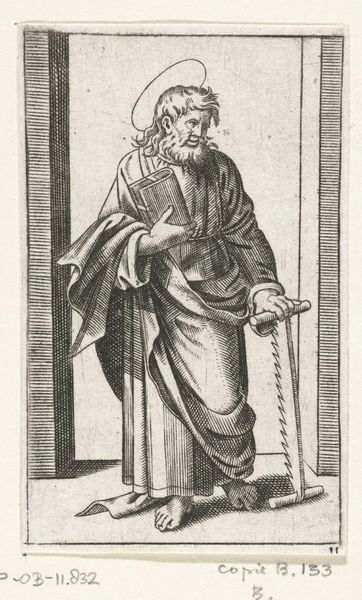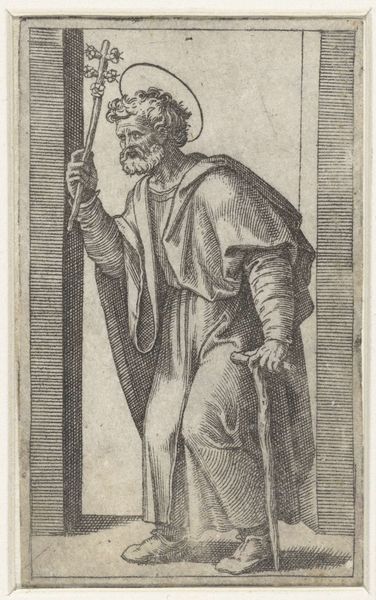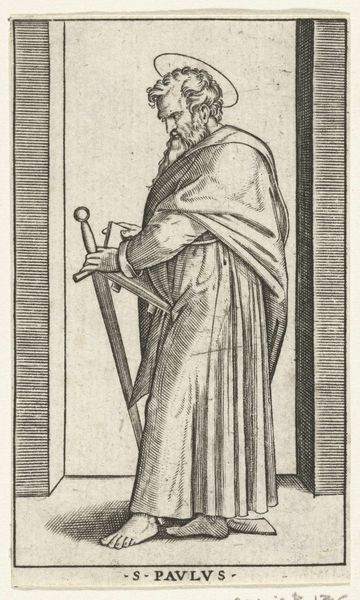
Saint Matthew, a small sack in his left hand, from "Piccoli Santi" (Small Saints) 1495 - 1532
0:00
0:00
drawing, print, engraving
#
portrait
#
drawing
# print
#
figuration
#
italian-renaissance
#
engraving
Dimensions: 3 1/8 x 1 7/8 in. (8.0 x 4.8 cm)
Copyright: Public Domain
Editor: So, here we have "Saint Matthew, a small sack in his left hand, from 'Piccoli Santi' (Small Saints)," an engraving by Marcantonio Raimondi, created sometime between 1495 and 1532. What strikes me immediately is how ordinary Matthew seems; he's just standing there with his sack. What can you tell me about this piece? Curator: Let's think about what this engraving *is*: ink pressed onto paper. Raimondi was instrumental in popularizing printmaking. Consider the labor involved - the meticulous work of carving the image onto a metal plate, the press, the paper. These multiples democratized images. Did this availability affect the value attributed to the image, both monetary and devotional? Editor: That’s interesting – how a focus on the ‘everydayness’ of printmaking itself sort of mirrors the everydayness you see in the subject, Saint Matthew? Were these prints affordable for a wide range of people? Curator: Precisely. These "small saints" were likely far more accessible than, say, a painted altarpiece. What impact does that have on the *consumption* of religious imagery, do you think? How does mass production shape belief and devotion? The small sack suggests practical needs and everyday realities, not some idealized, distant figure. Editor: It reframes saintliness. Makes it more tangible, connected to material life. It’s not some far-off ideal, but something relatable, achievable perhaps. The print allows that idea to spread, like wildfire, and becomes quite radical, maybe even, subversive? Curator: It certainly complicates established power structures. Looking closely, how do you see the process impacting your reading of the saint here, say, compared to images we are more familiar with in oil on panel, such as an idealized Raphael depiction? Editor: Thinking about the limitations of the engraving process – the stark lines, the lack of color – it strips away any pretense of grandeur. It reduces Matthew to a figure defined by simple lines and a humble bag, his holiness made visible through a readily reproducible format, truly turning conventional depictions of saints on its head. Thank you! Curator: And thank you. Thinking about art through the lens of production really forces us to reconsider value, doesn't it?
Comments
No comments
Be the first to comment and join the conversation on the ultimate creative platform.

